Tankless water heaters are a convenient and efficient option for providing hot water on demand. However, cold weather can pose some challenges for these systems. In this article, we will explore expert tips for resolving tankless water heater issues in cold weather. From understanding how tankless water heaters work to troubleshooting common issues, we will provide valuable insights to help you maintain a reliable hot water supply during the colder months.
Key Takeaways
- Insulate your tankless water heater to prevent heat loss in cold weather.
- Regularly check for leaks and fix them promptly to avoid damage.
- Clear the ventilation system to ensure proper airflow and prevent freezing.
- Troubleshoot common issues like no hot water or fluctuating water temperature.
- Perform regular maintenance tasks such as cleaning the water filter and inspecting/replacing parts.
Understanding Tankless Water Heaters

How Tankless Water Heaters Work
Tankless water heaters, also known as on-demand water heaters, provide hot water instantly without the need for a storage tank. When a hot water tap is turned on, cold water flows into the unit and is heated by a powerful electric or gas burner. The heated water then flows out of the unit and to the tap, providing a continuous supply of hot water.
Tankless water heaters are designed to be energy-efficient, as they only heat water when it is needed. This can result in significant energy savings compared to traditional water heaters that constantly heat and store water. Additionally, tankless water heaters are compact in size and can be installed in various locations, making them a popular choice for homeowners with limited space.
To better understand the functionality of tankless water heaters, refer to the table below that highlights the key components and their functions:
| Component | Function |
|---|---|
| Heat exchanger | Heats the water as it flows through |
| Burner | Provides the heat source |
| Flow sensor | Activates the burner when water is flowing |
| Control panel | Allows users to adjust temperature settings |
If you are considering installing a tankless water heater, it is important to be aware of the common issues that may arise. These issues will be discussed in the following sections.
Common Issues with Tankless Water Heaters
Tankless water heaters can experience several common issues, which can be frustrating for homeowners. One common issue is insufficient hot water. This can be caused by a variety of factors, such as a malfunctioning heating element or a clogged water filter. To resolve this issue, it is recommended to check the water filter and clean or replace it if necessary. Another common issue is fluctuating water temperature. This can occur when the water heater is not properly sized for the household's hot water demand. It can also be caused by a faulty temperature sensor or a problem with the gas or electrical supply. If you are experiencing fluctuating water temperature, it is best to consult a professional plumber to diagnose and fix the issue.
In addition to these common issues, tankless water heaters can also be susceptible to freezing water pipes in cold weather. When the temperature drops below freezing, the water inside the pipes can freeze and cause damage to the water heater. To prevent this, it is important to insulate the pipes and ensure proper ventilation to prevent freezing. If you suspect that your water pipes are frozen, it is crucial to thaw them out carefully to avoid further damage.
To summarize, common issues with tankless water heaters include insufficient hot water, fluctuating water temperature, and freezing water pipes. It is important to address these issues promptly to ensure the proper functioning of your tankless water heater.
Preparing Your Tankless Water Heater for Cold Weather

Insulating the Water Heater
Insulating your tankless water heater is an important step to ensure its efficiency and performance in cold weather. By adding insulation, you can prevent heat loss and keep the water inside the heater at the desired temperature. Here are some key points to consider when insulating your tankless water heater:
- Use insulation blankets specifically designed for tankless water heaters. These blankets are easy to install and provide an extra layer of insulation to minimize heat loss.
- Pay attention to the manufacturer's guidelines when insulating your water heater. Some models may require specific types of insulation or have restrictions on where insulation can be applied.
- Insulate the hot water pipes connected to the tankless water heater as well. This will help maintain the temperature of the water as it travels from the heater to the faucets.
Remember, proper insulation can significantly improve the performance and energy efficiency of your tankless water heater in cold weather.
Checking for Leaks
When preparing your tankless water heater for cold weather, it is important to check for any leaks. Leaks can lead to water damage and reduce the efficiency of your heater. Here are a few steps to follow when checking for leaks:
- Inspect all the connections and fittings for any signs of leakage.
- Look for water puddles or damp areas around the heater.
- Check the pressure relief valve for any leaks.
Tip: Regularly checking for leaks and addressing them promptly can help prevent costly repairs and ensure the optimal performance of your tankless water heater.
Clearing the Ventilation System
When it comes to maintaining your tankless water heater in cold weather, clearing the ventilation system is an important step. Over time, dust, debris, and other particles can accumulate in the ventilation system, obstructing the flow of air. This can lead to reduced efficiency and potential issues with the heater's performance.
To clear the ventilation system, follow these steps:
- Turn off the power to the water heater.
- Locate the ventilation system, which is usually located on the top or side of the unit.
- Use a soft brush or vacuum cleaner to remove any dust or debris from the vents.
- Check for any obstructions or blockages and remove them if necessary.
By regularly clearing the ventilation system, you can ensure that your tankless water heater operates at its best in cold weather conditions.
Troubleshooting Tankless Water Heater Issues in Cold Weather

No Hot Water
If you're experiencing a lack of hot water from your tankless water heater in cold weather, there are a few possible causes and solutions to consider.
First, check the thermostat setting on your water heater. It's possible that the temperature is set too low, preventing the water from reaching the desired hot temperature. Adjust the thermostat to a higher setting and see if that resolves the issue.
Another potential cause of no hot water is a blocked or dirty water filter. Over time, mineral deposits and debris can accumulate in the filter, restricting water flow and reducing the heater's efficiency. Regularly cleaning or replacing the water filter can help restore hot water flow.
If neither of these solutions work, it's possible that there is a problem with the heating element in the water heater. In this case, it's best to contact a professional plumber or the manufacturer for further assistance.
Remember, proper maintenance and regular inspections can help prevent issues with your tankless water heater and ensure reliable hot water supply in cold weather.
Fluctuating Water Temperature
Fluctuating water temperature in a tankless water heater can be a frustrating issue to deal with, especially during cold weather. There are a few possible causes for this problem:
-
Water flow rate: If the water flow rate is too high, it can cause the temperature to fluctuate. Make sure the flow rate is within the recommended range for your specific tankless water heater.
-
Mineral buildup: Over time, mineral deposits can accumulate in the heat exchanger of the water heater, affecting its performance. Regularly cleaning the heat exchanger can help prevent fluctuating water temperature.
-
Faulty temperature sensors: If the temperature sensors in the water heater are not functioning properly, it can lead to inconsistent temperature output. Contact a professional technician to diagnose and replace any faulty sensors.
To resolve the issue of fluctuating water temperature, it is recommended to check the water flow rate, clean the heat exchanger, and ensure the temperature sensors are working correctly.
Frozen Water Pipes
During cold weather, one common issue with tankless water heaters is frozen water pipes. When the temperature drops below freezing, the water inside the pipes can freeze, causing blockages and preventing the flow of hot water. To prevent frozen water pipes, it is important to take the following steps:
- Insulate the pipes: Use pipe insulation or heat tape to wrap the exposed pipes and prevent them from freezing.
- Keep the area around the pipes warm: Ensure that the space where the pipes are located is adequately heated to prevent freezing.
- Let the water trickle: Allowing a small amount of water to flow through the pipes can help prevent freezing.
Note: If you suspect that your water pipes are frozen, it is important to take immediate action to thaw them. You can use a hairdryer, heat lamp, or hot towels to gently warm the pipes and restore the flow of water. However, it is recommended to seek professional help if you are unsure or if the situation is more severe.
Maintaining Your Tankless Water Heater in Cold Weather

Regularly Cleaning the Water Filter
Regularly cleaning the water filter is crucial for maintaining the efficiency and performance of your tankless water heater. Over time, mineral deposits and debris can accumulate in the filter, causing clogs and reducing water flow. To clean the water filter:
- Turn off the power to the water heater and shut off the water supply.
- Locate the water filter, which is typically located near the inlet of the water heater.
- Remove the filter housing and take out the filter.
- Rinse the filter under running water to remove any debris.
- If the filter is heavily clogged, soak it in a mixture of vinegar and water for about 30 minutes.
- After cleaning, reassemble the filter housing and reinstall the filter.
Note: It's recommended to clean the water filter at least once every six months to ensure optimal performance.
Tip: Keeping the water filter clean not only improves the efficiency of your tankless water heater but also extends its lifespan.
Flushing the System
Flushing the system is an important maintenance task for your tankless water heater, especially in cold weather. It helps remove any mineral deposits or sediment that may have accumulated in the system, ensuring optimal performance and efficiency.
To flush the system, follow these steps:
- Turn off the power to the water heater and close the gas supply valve.
- Attach a hose to the drain valve located at the bottom of the unit.
- Place the other end of the hose in a suitable drainage area, such as a floor drain or a bucket.
- Open the drain valve and allow the water to flow out of the system.
- Let the water run for a few minutes to ensure all sediment is flushed out.
- Close the drain valve and remove the hose.
- Turn on the power and gas supply to the water heater.
Remember to consult your manufacturer's instructions for specific flushing procedures and recommendations.
Tip: Flushing the system at least once a year can help prolong the lifespan of your tankless water heater and prevent potential issues in the future.
Inspecting and Replacing Parts
When it comes to maintaining your tankless water heater in cold weather, inspecting and replacing parts is crucial. Regularly checking the condition of various components ensures optimal performance and helps prevent potential issues. Here are some key steps to follow:
-
Check the heating element: The heating element is responsible for heating the water in the tankless water heater. Inspect it for any signs of damage or corrosion. If necessary, replace it to ensure efficient heating.
-
Inspect the pressure relief valve: The pressure relief valve is designed to release excess pressure from the system. Check it for any leaks or malfunctions. If needed, replace it to maintain proper pressure regulation.
-
Examine the water flow sensor: The water flow sensor detects the flow of water and activates the heating element. Make sure it is clean and free from any debris or blockages. Clean or replace it if necessary.
-
Check the gas burner: If your tankless water heater is gas-powered, inspect the gas burner for any dirt or debris buildup. Clean it thoroughly to ensure efficient combustion.
Remember, regular inspection and replacement of parts are essential for the smooth operation of your tankless water heater in cold weather.
Maintaining Your Tankless Water Heater in Cold Weather
Conclusion
In conclusion, resolving tankless water heater issues in cold weather requires a combination of preventive measures and troubleshooting techniques. By following the expert tips outlined in this article, homeowners can ensure that their tankless water heaters perform optimally even in freezing temperatures. Remember to regularly maintain the unit, insulate the pipes, and address any potential issues promptly. With these strategies in place, you can enjoy a continuous supply of hot water throughout the winter season.
Frequently Asked Questions
How often should I clean the water filter of my tankless water heater?
It is recommended to clean the water filter of your tankless water heater at least once every six months to ensure proper functioning and prevent clogs.
Can I install a tankless water heater in a cold climate?
Yes, tankless water heaters can be installed in cold climates. However, it is important to properly insulate the unit and perform regular maintenance to prevent freezing issues.
Why is my tankless water heater not producing hot water?
There could be several reasons for a tankless water heater not producing hot water, including a malfunctioning heating element, a faulty thermostat, or a problem with the gas supply. It is recommended to contact a professional plumber to diagnose and fix the issue.
How can I prevent frozen water pipes in my tankless water heater?
To prevent frozen water pipes in your tankless water heater, make sure the unit is properly insulated and the ventilation system is clear. It is also recommended to keep the water flowing at a slow drip during extremely cold weather.
What should I do if the water temperature from my tankless water heater keeps fluctuating?
Fluctuating water temperature in a tankless water heater can be caused by a variety of factors, including a dirty water filter, a faulty temperature sensor, or a problem with the gas supply. It is best to contact a professional plumber to diagnose and resolve the issue.
How long do tankless water heaters typically last?
Tankless water heaters have a longer lifespan compared to traditional water heaters, typically lasting around 20 years or more with proper maintenance. However, the lifespan can vary depending on factors such as usage, water quality, and maintenance.
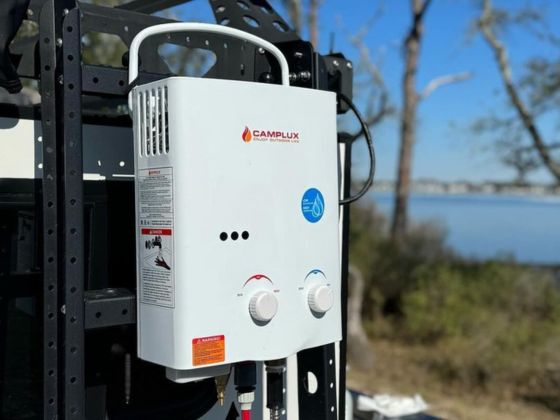
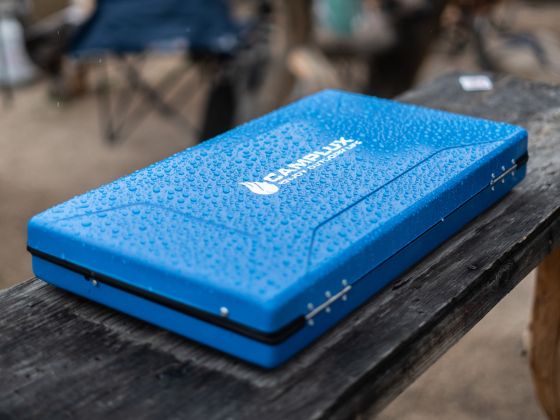
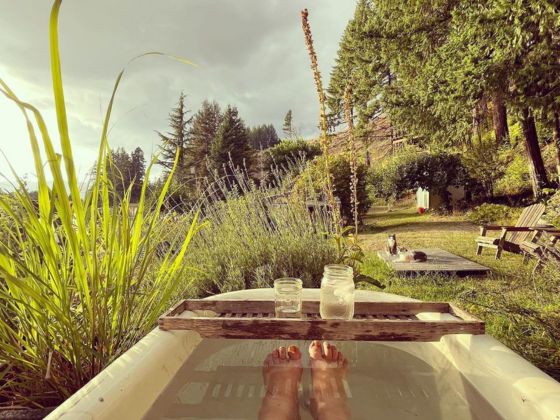
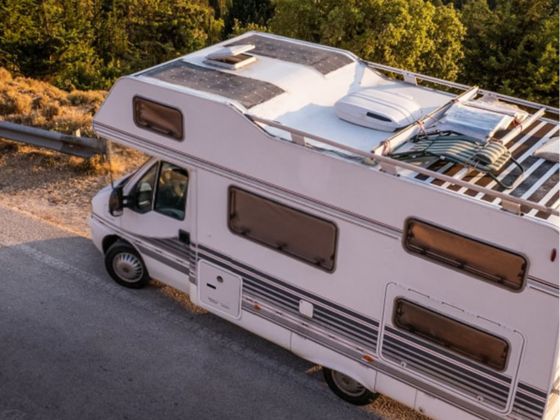
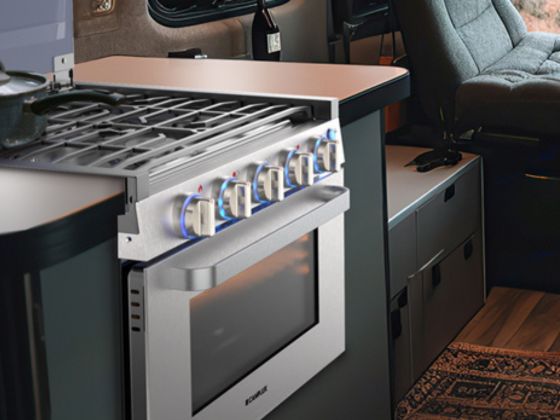
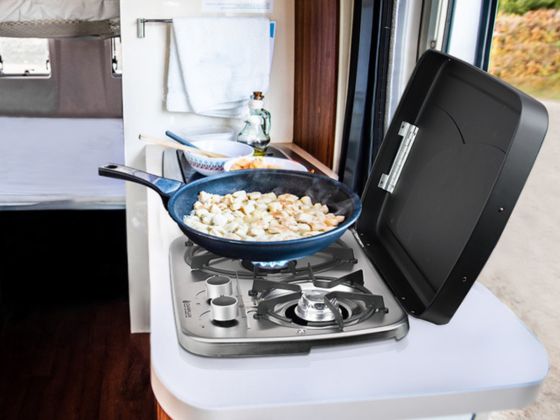
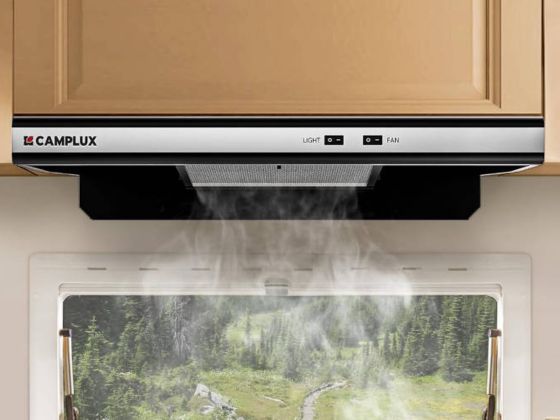
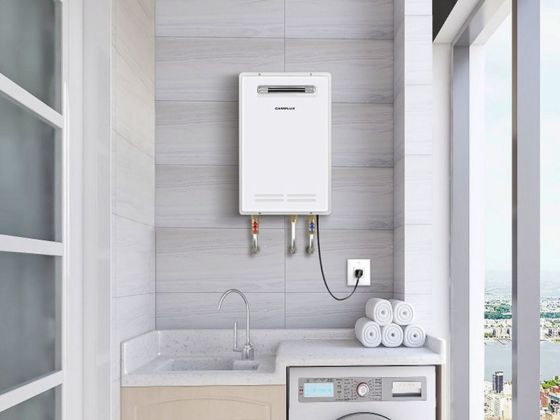
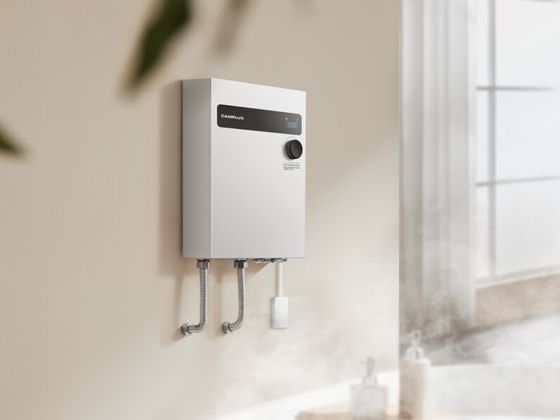
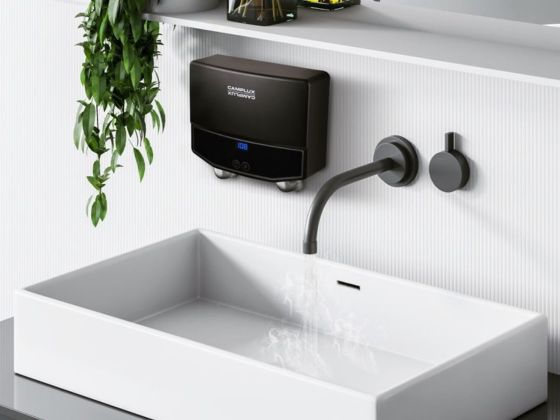


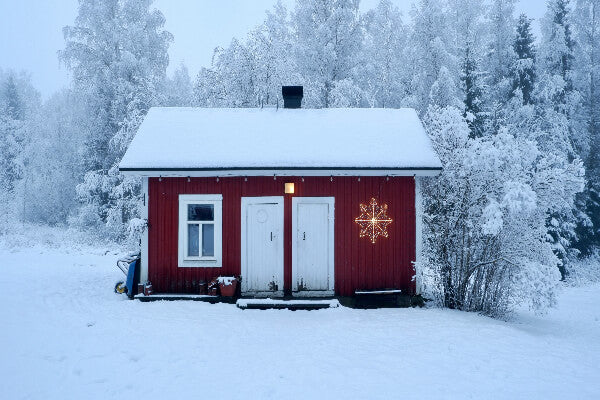
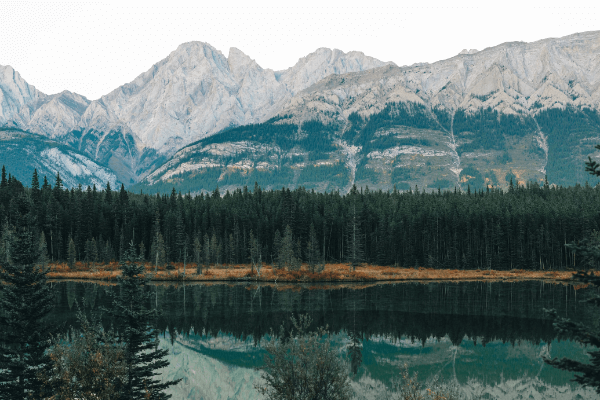
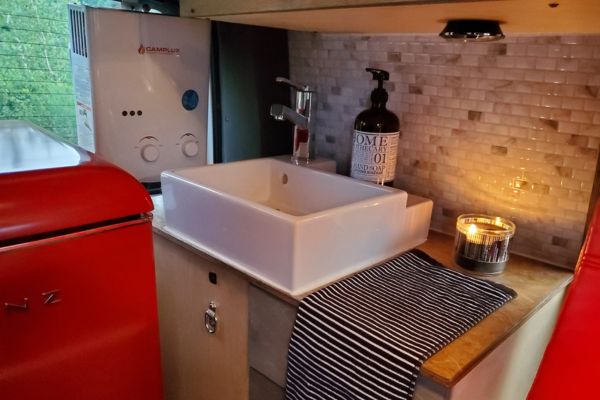
1 comment
David Warren
I have an off grid cabin with a small kitchen and bathroom. The cabin has spring water piped in and have propane and solar power with batteries. How much amperage does it take to power your units?
I have an off grid cabin with a small kitchen and bathroom. The cabin has spring water piped in and have propane and solar power with batteries. How much amperage does it take to power your units?